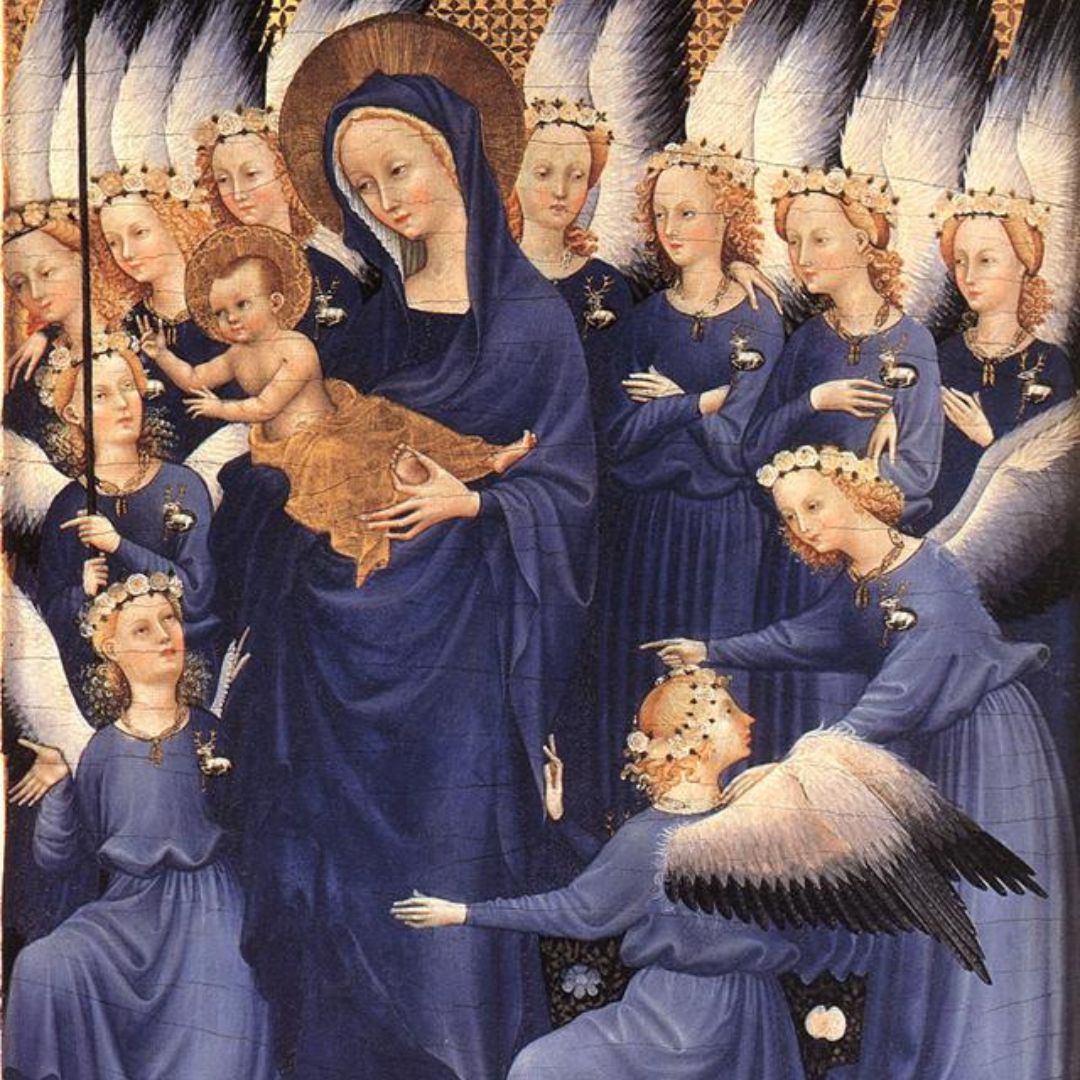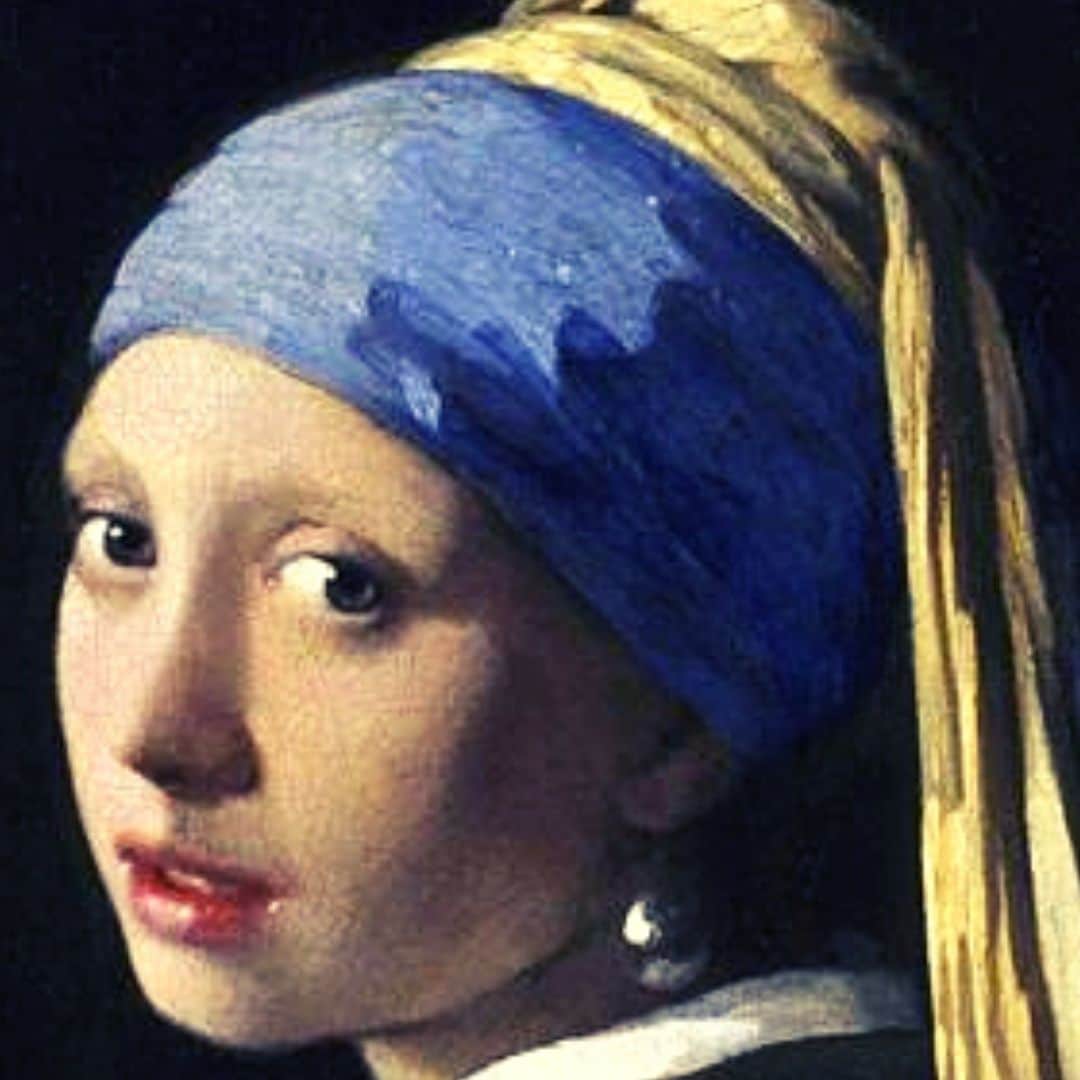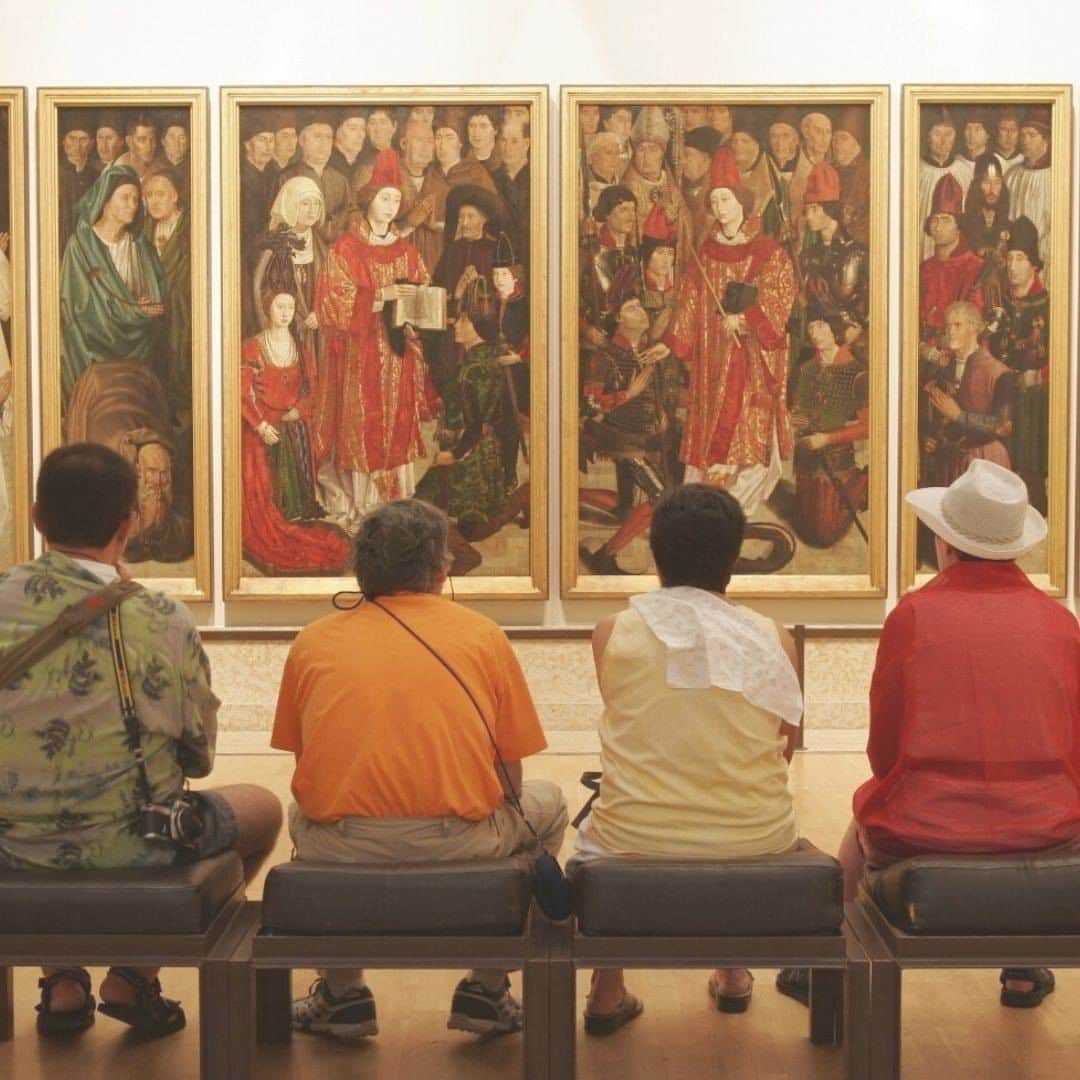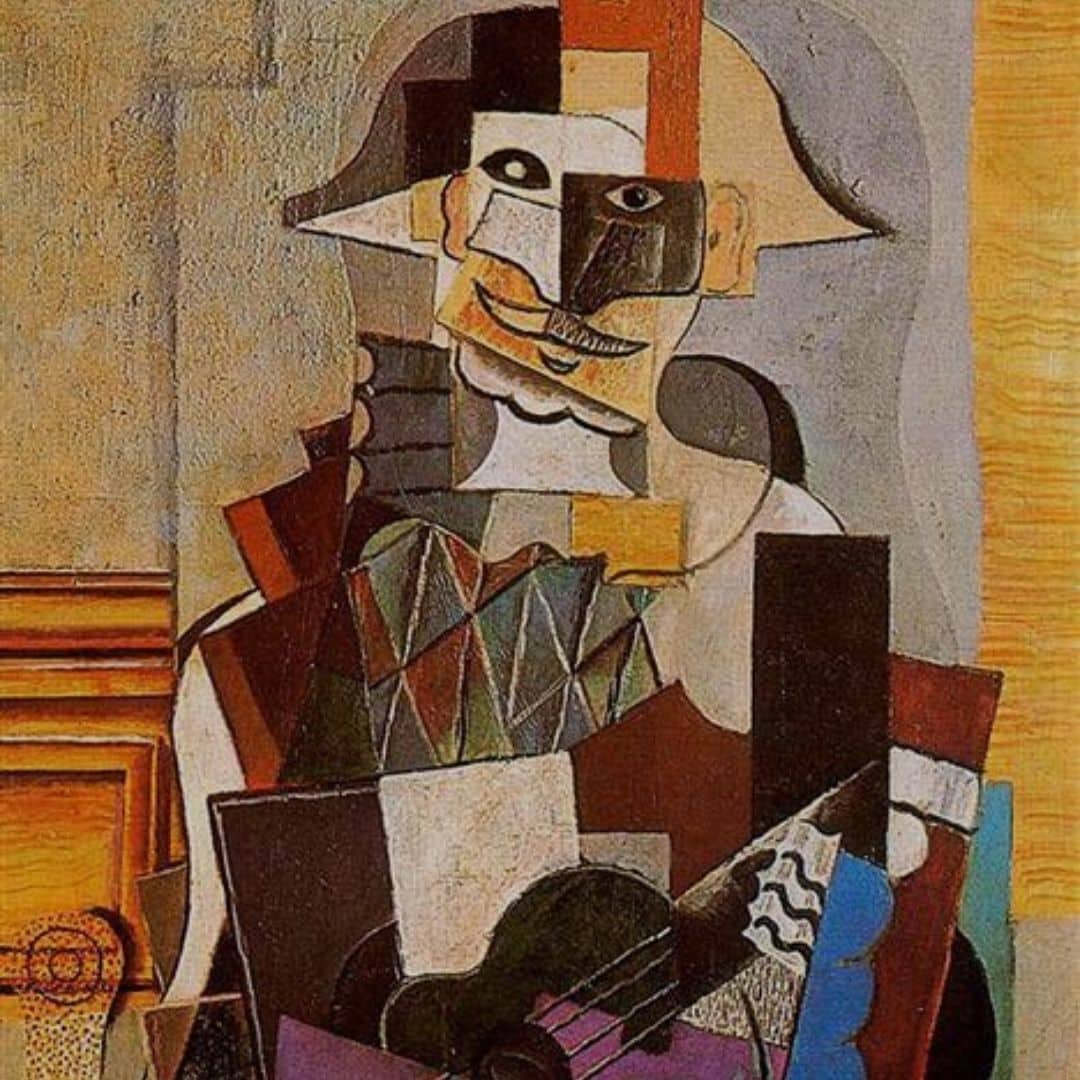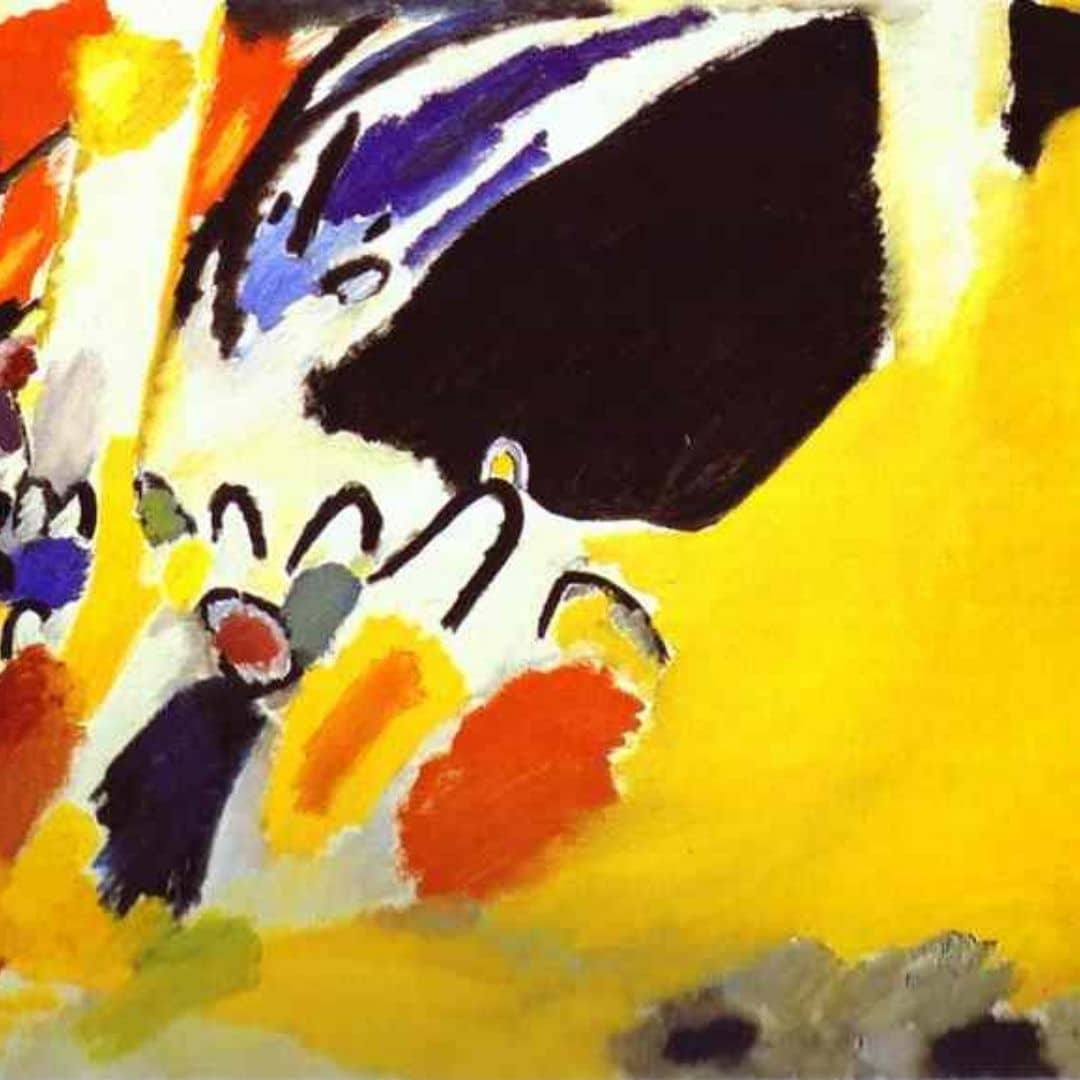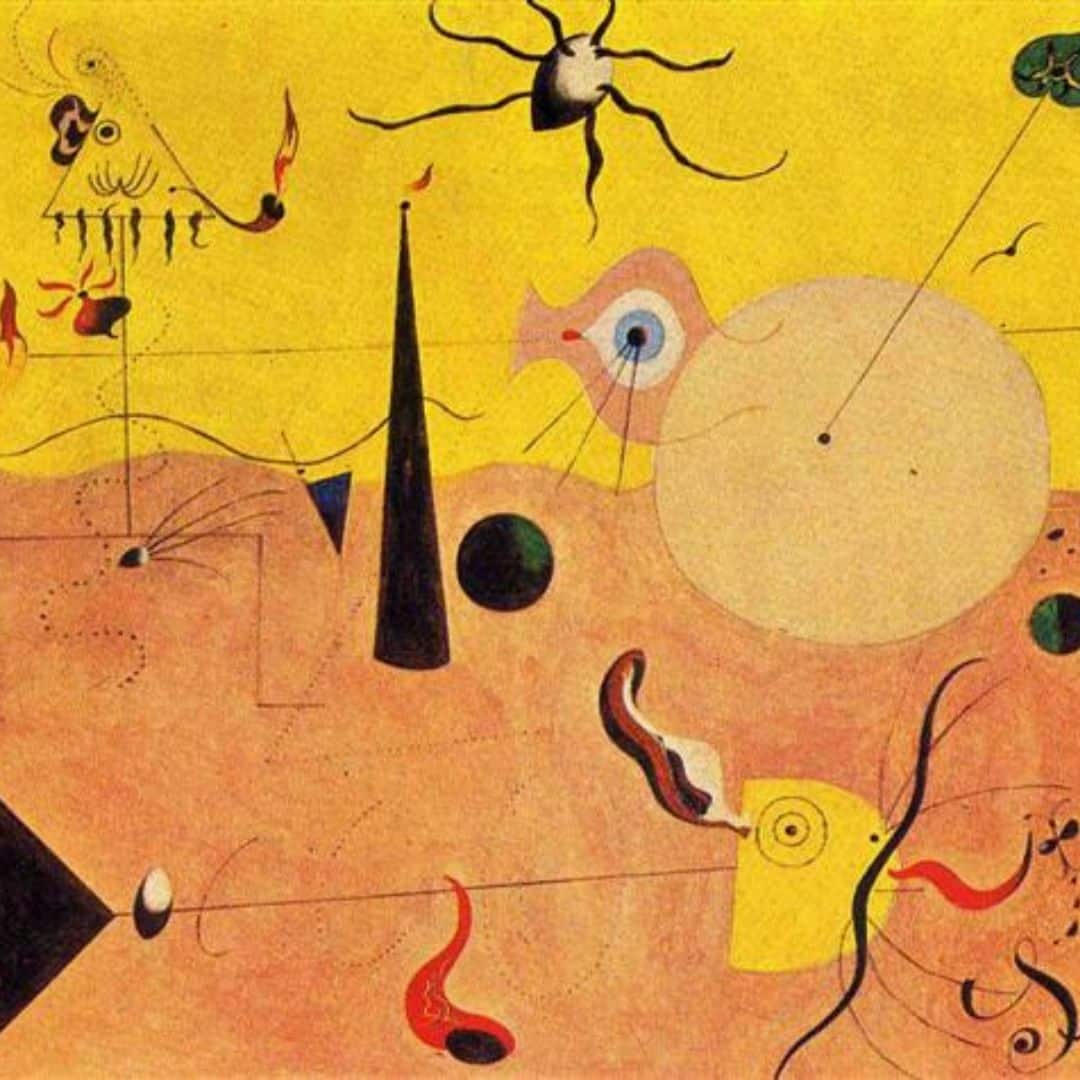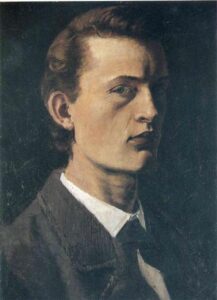
Edvard Munch self portrait1882
Edvard Munch was undoubtedly one of the greatest artists in the history of art, not only for the genius of his works but also for the innovation in terms of stroke, colour and dramatic intensity of his paintings.
Edvard Munch’s influence on the artists and artistic movements that emerged from the late 19th and early 20th centuries is undeniable.
His work The Scream is considered in art history to be one of the representative works of expressionist art, the first version of which was painted in 1893; more than a decade before the emergence of the two movements considered to be the representatives of expressionism: Die Brücke (The Bridge) and Der Blaue Reiter (The Blue Rider).
In this article we’ll look at:
- Edvard Munch’s dramatic life and its impact on his art
- The Scream
- The intense colours in Edvard Munch’s work
- Conservative issues in the works of Edvard Munch
Edvard Munch’s dramatic life and its reflection in his art
“I can’t get rid of my illnesses, because there’s a lot in my art that only exists because of them”.
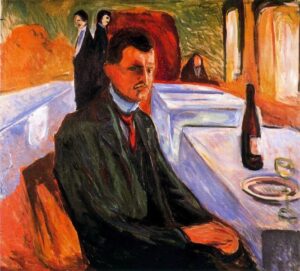
Edvard Munch, self portrait, 1906
The Norwegian painter Edvard Munch, famous for his painting The Scream and for being one of history’s leading artists, wrote this.
Munch’s family background was indeed dramatic.
He was born on 12 December 1863 in Ådalsbruk, Løten, Norway.
His mother and one of his sisters died of tuberculosis when he was very young. His father suffered from depression and his other sister was diagnosed with schizophrenia.
Edvard Munch did not escape unscathed. He had a mental breakdown in 1908, aggravated by alcoholism, and was admitted to a mental health clinic in Denmark.
In addition to his well-known health problems, the painter also faced other problems: in 1937, his works were confiscated by Hitler’s government and labelled by the dictator as “degenerate art”.
Munch wrote that “sickness, madness and death were the black angels that guarded my cradle.” His work is characterised by characters whose despair and anguish are evident. The brushstrokes and colours that Munch uses in his compositions are associated with his own state of mind.
The Scream
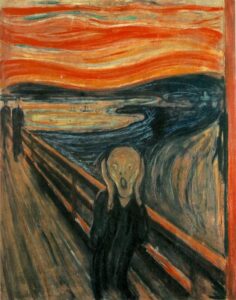
Edvard Munch. The Scream. 1893, oil on canvas. 91×73,5cm.
Edvard Munch’s best-known work is The Scream.
In Munch’s work, we can see the essence of expressionist painting: there is a human figure (very shapeless, but it is), with sinuous lines and everything in the image writhing.
The strong colours and lines emphasise the emotion that the artist wanted to show. This shows that, in addition to the themes (agony, pain, screams, drama), the technique was also very specific and expressive.
Leaving a completely distorted character in front of the viewer, with his mouth open and desperate, using colours and strokes that until then had hardly been combined, was an unprecedented move in art.
Munch made four versions of this work. With three in Norwegian museums, the fourth remains one of the most expensive works in history sold at auction and was acquired by an anonymous buyer at a Sothebys auction.
The intense colours of Edvard Munch
The intense yellows and reds of The Scream and other paintings by Munch are usually associated with the expression of the deepest human emotions, anguish and despair.
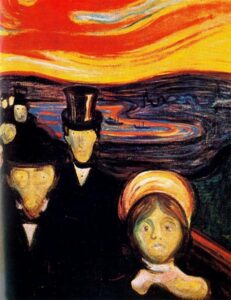
Anxiety 1894
The violent contrasts between these intense colours and the characters who take on almost shapeless outlines characterise many of the painter’s works.

Edvard Munch, Four ages in life, 1902
Other interpretations of the colours used by Edvard Munch
In 2017, a theory was proposed that the red, orange and yellow colours in The Scream were a representation of a type of cloud that is considered rare, but which appears from time to time in northern Europe: polar stratospheric clouds. This atmospheric phenomenon would have impressed the artist to the point of reproducing it on his canvases.
The theory has been contested by other researchers since Munch’s work was much more linked to the expression of emotions than to the expression of reality.
What is certain is that the artist often used intensely coloured pigments such as cadmium yellow to express emotions in his paintings. This is currently creating conservation problems, as we’ll see below.
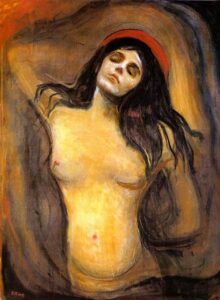
Madonna 1894
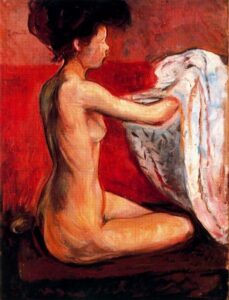
Paris Nude 1896
Conservative issues in the work of Edvard Munch
Cadmium Yellow (cadmium sulphide) was one of the pigments most used by Edvard Munch. It was first commercialised in the 1840s and gave bright, intense yellows.
Its good covering power quickly made it one of the artists’ favourite pigments. Vincent van Gogh, Edvard Munch and Miró all incorporated this colour into their palettes.
The challenge of conservation
Works of art in which paint composed of this pigment has been used present important conservation issues since it has a tendency to fade and is particularly sensitive to humidity, light and acidic environments.
Exposure of works of art over time, albeit currently under optimised environmental conditions, has led to the fading of some of the vibrant and intense colours initially intended by the artists.
It is currently one of the great challenges for conservators and museums to preserve these works in optimum conditions and to systematically monitor degradation processes.

